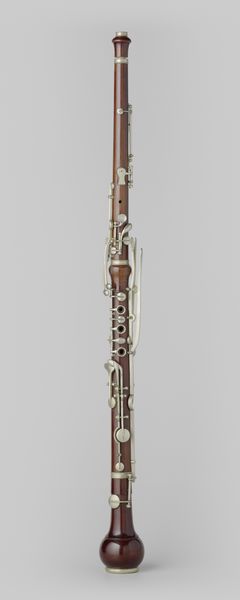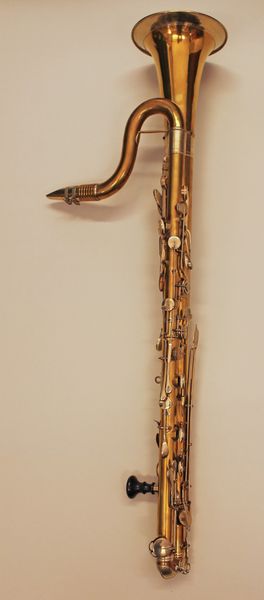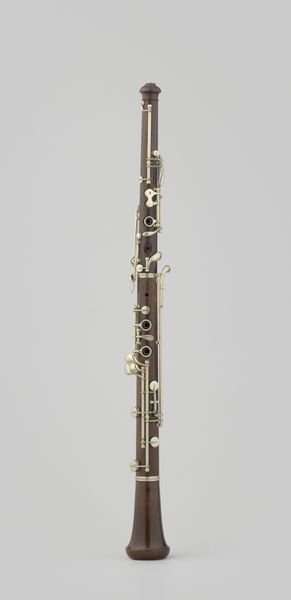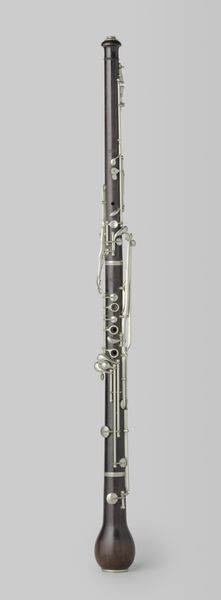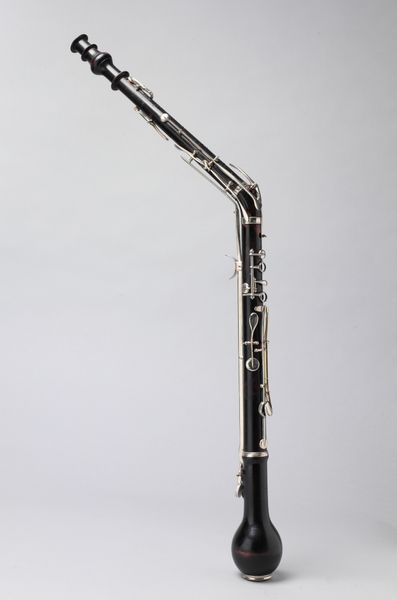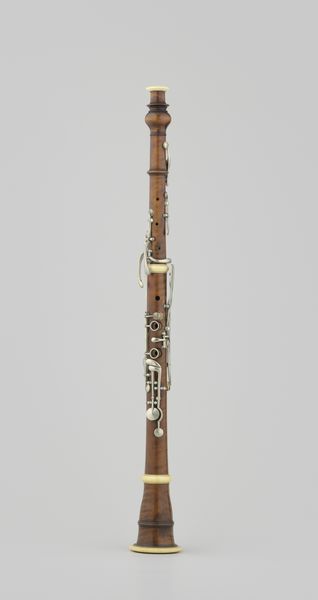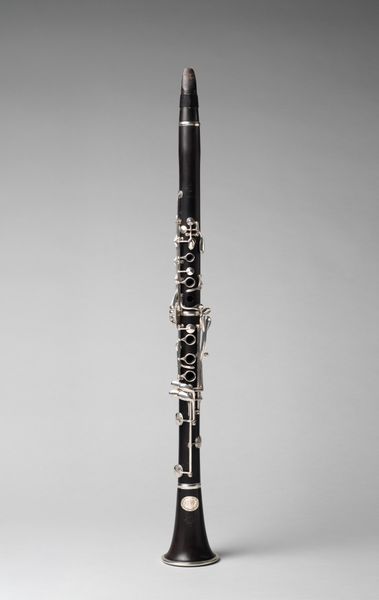
brass, metal, wood
#
brass
#
metal
#
france
#
wood
#
musical-instrument
#
decorative-art
Dimensions: L. 70.3 cm (27-11/16 in.)
Copyright: Public Domain
Curator: This beautiful instrument is a clarinet in A, crafted in France by Buffet, Crampon & Cie. sometime between 1860 and 1865. It’s currently held here at the Metropolitan Museum of Art. What are your initial impressions? Editor: Elegant and ornate. The brass against that figured wood is quite striking. There’s something almost regal about the craftsmanship; it gives off a very ceremonial vibe. Curator: Absolutely. This clarinet represents a period when musical instruments were elevated to the status of decorative art, mirroring the prevailing tastes of the bourgeoisie. Consider how the mid-19th century was really the flourishing point for design innovation to appeal to ever greater concert audiences. Editor: Yes, the symbolism resonates. The polished brass speaks of progress and ingenuity, yet it's tempered by the warmth of the wood, perhaps hinting at tradition. The key arrangement suggests a level of sophistication, an evolution in musical expression. What was this instrument typically used for, socially? Curator: Clarinets of this period found their place in opera houses, symphony orchestras, and smaller chamber ensembles. The increasing demand from middle-class concert goers boosted its manufacture. Instruments like this represented accessibility of music as cultural participation. It reflected the growing public sphere of the time. Editor: Thinking about cultural participation brings another set of considerations, which stem from how instruments and orchestras historically were platforms for displaying culture and heritage through music itself. How well might an instrument like this embody and broadcast those musical associations to its 19th century audience? Curator: To hear an A clarinet played at a civic function was really akin to hearing a symbol of culture itself. They definitely didn't have today's media for instant connection. What these kinds of artifacts did, and can still do today in a museum, is summon what it meant to hear live performance as being integral to shared identity. Editor: In viewing this lovely Clarinet in A, it strikes me how much we connect to the past, not only with historical records, but also through the tangible objects themselves. Thank you for enlightening us, Professor. Curator: My pleasure! I'm sure that it can bring musical insights to contemporary and future artists and instrument designers, alike.
Comments
No comments
Be the first to comment and join the conversation on the ultimate creative platform.




